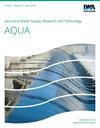Technical and environmental aspects of solar photo-voltaic water pumping systems: a comprehensive survey
IF 4.3
Q2 Environmental Science
引用次数: 0
Abstract
Several sectors including agriculture and farming rely on renewable source-based water pumping due to recurrent hikes in fossil fuel prices and contaminant environment. In recent decades, a solar photovoltaic-based water pumping system (SPVWPS) has been a more popularly chosen technique for its feasibility and economic solution to the end-users. The initial cost, efficiency, orientation, auxiliary storage, head, and payback period are the technical issues, whereas transportation, lack of skilled people, theft, vandalism community, and politics are the social challenges that may prevent the solar pumps from being widely adopted. However, more subsidies, training, tax breaks, and remote monitoring can make this technology more accessible. Also, this article emphasizes various parameters affecting system performance, such as the suitable selection of panels, power conditioning units, motors, pumps, the payback period of the energy, and cost. Moreover, this article covers the technical and environmental facets of the SPVWPS, which helps researchers, policymakers, manufacturers, and end-users to design and choose a suitable pumping system. Major findings are stand-alone SPVWPS is highly recommended in areas with a maximum of 50 m dynamic head and a minimum of 2,000 m from local grid power. Moreover, along with the 25-year life span of the 25-kW SPVWPS could generate 150 MWh/year and reduce about 86,500 kg of CO2 emissions.太阳能光伏水泵系统的技术和环境方面:综合调查
由于化石燃料价格的不断上涨和环境污染,包括农业和农业在内的一些部门依赖可再生能源抽水。近几十年来,基于太阳能光伏发电的抽水系统(SPVWPS)因其可行性和经济的解决方案而成为最终用户更广泛选择的技术。初始成本、效率、定位、辅助存储、水头和回收期是技术问题,而运输、缺乏熟练人员、盗窃、破坏社区和政治是可能阻碍太阳能泵被广泛采用的社会挑战。然而,更多的补贴、培训、税收减免和远程监控可以使这项技术更容易获得。本文还重点介绍了影响系统性能的各种参数,如面板的选择、功率调节机组、电机、泵、能源回收期、成本等。此外,本文还涵盖了SPVWPS的技术和环境方面,这有助于研究人员、政策制定者、制造商和最终用户设计和选择合适的泵系统。主要发现是,在动态水头不超过50米、距离当地电网不超过2000米的地区,强烈建议采用独立的SPVWPS。此外,随着25年的使用寿命,25千瓦的SPVWPS可以产生150兆瓦时/年,减少约86,500公斤的二氧化碳排放。
本文章由计算机程序翻译,如有差异,请以英文原文为准。
求助全文
约1分钟内获得全文
求助全文
来源期刊
CiteScore
4.70
自引率
0.00%
发文量
74
审稿时长
4.5 months
期刊介绍:
Journal of Water Supply: Research and Technology - Aqua publishes peer-reviewed scientific & technical, review, and practical/ operational papers dealing with research and development in water supply technology and management, including economics, training and public relations on a national and international level.

 求助内容:
求助内容: 应助结果提醒方式:
应助结果提醒方式:


